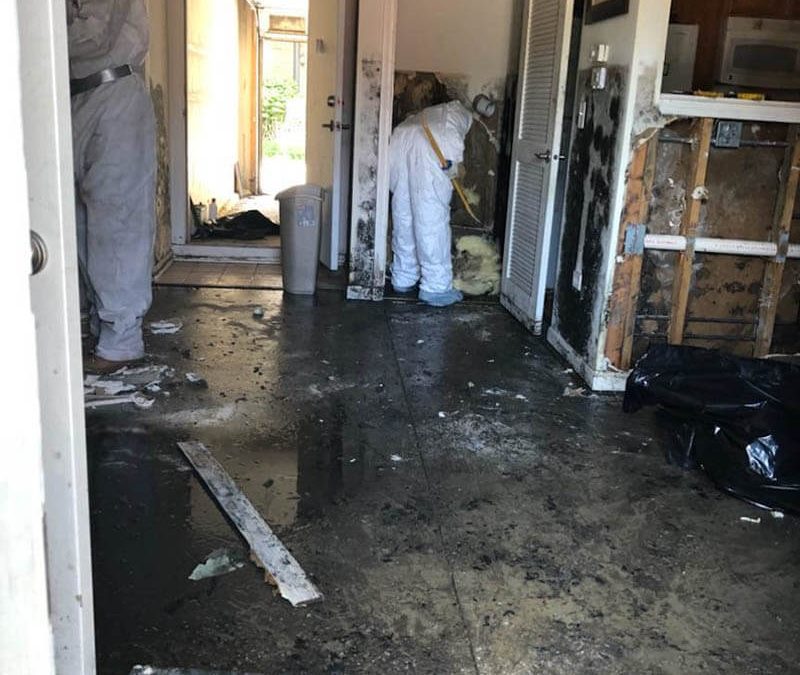Knowing the Price of Sewage Cleanup
Sewage backup or overflow is a distressing and potentially hazardous situation that can occur in any property. Knowing the price of sewage cleanup can come in handy. Aside from the immediate health risks and inconvenience it poses, sewage cleanup also comes with significant financial implications. Understanding the factors that influence sewage cleanup costs is crucial for homeowners and property managers. In this detailed guide, we will explore the various factors that contribute to sewage cleanup costs, including the extent of the damage, cleanup methods, professional services, and insurance coverage. By gaining insight into these factors, individuals can better prepare for and navigate the process of sewage cleanup while minimizing financial strain.
Extent of Damage
The extent of sewage damage is a primary determinant of cleanup costs. The severity of the backup, the volume of sewage involved, and the areas affected all play a role in determining the scope of cleanup efforts. Minor backups confined to one area may require less extensive cleanup compared to major overflows that affect multiple rooms or levels of the property. Assessing the extent of damage is the first step in estimating cleanup costs, as it provides valuable information for developing a comprehensive restoration plan.
Cleanup Methods and Equipment
The methods and equipment used for sewage cleanup significantly impact the overall cost. Professional restoration companies employ specialized equipment and techniques to effectively remove sewage, sanitize affected areas, and restore the property to a safe and habitable condition. These are some of the equipment and method used by restoration services in sewage cleanup:
- High-Powered Pumps: Used to remove standing water and sewage from affected areas swiftly.
- Extraction Tools: Equipment designed to extract sewage and water from carpets, upholstery, and other porous materials.
- Industrial-Grade Disinfectants: Powerful sanitizers employed to eliminate harmful pathogens and bacteria from contaminated surfaces.
- Sanitizing Solutions: Solutions used to sanitize and decontaminate affected areas, ensuring a safe and hygienic environment.
- Advanced Drying Equipment: Including air movers, dehumidifiers, and moisture meters, used to accelerate the drying process and prevent mold growth.
- Personal Protective Equipment (PPE): Essential gear worn by restoration professionals to protect against exposure to hazardous materials and contaminants.
- Containment Barriers: Used to isolate contaminated areas and prevent the spread of sewage and contaminants to unaffected areas.
- Odor Neutralizers: Chemical agents and air scrubbers employed to eliminate unpleasant odors caused by sewage backup.
- Moisture Detection Tools: Instruments used to detect moisture in hidden or hard-to-reach areas, ensuring thorough drying and prevention of mold growth.
- Restoration Tools: Including power washers, scrubbers, and brushes used to clean and restore surfaces affected by sewage backup.
Structural Damage and Restoration
Sewage backup can cause extensive damage to the structural integrity of the property. In addition to contaminating surfaces and belongings, sewage can infiltrate building materials such as drywall, insulation, and flooring, leading to structural compromise and deterioration. Addressing structural damage and conducting necessary repairs and restoration efforts are essential components of sewage cleanup. The cost of structural repairs, including material replacement, reconstruction, and labor, adds to the overall cleanup expenses.

Understanding Sewage Cleanup Costs: Factors to Consider
Health and Safety Considerations
Sewage backup poses significant health and safety risks to occupants and restoration professionals. Exposure to sewage contaminants can lead to a range of health issues, including bacterial infections, gastrointestinal illnesses, and respiratory problems. Proper safety measures, including personal protective equipment (PPE), containment barriers, and disinfection protocols, are essential for mitigating health risks during cleanup operations. The implementation of stringent safety measures contributes to cleanup costs but is crucial for protecting the health and well-being of everyone involved.
Professional Restoration Services
Hiring professional restoration services is often necessary for effective sewage cleanup and mitigation. Experienced restoration companies have the expertise, training, and equipment to handle sewage emergencies safely and efficiently. The cost of professional services includes initial assessment and inspection, cleanup and sanitation, structural drying, odor removal, and restoration efforts. While the upfront cost of professional services may seem high, it is a worthwhile investment in ensuring thorough cleanup and preventing long-term damage and health hazards.
Insurance Coverage and Claims
Homeowners insurance policies may provide coverage for sewage backup and related damages, depending on the policy terms and coverage limits. It is essential to review your insurance policy and understand the extent of coverage for sewage cleanup and restoration expenses. Documenting the damage, filing a claim promptly, and working with your insurance provider are crucial steps in securing compensation for cleanup costs. However, coverage limitations, deductibles, and exclusions may affect the out-of-pocket expenses incurred by the property owner.
Sewage cleanup costs can vary widely depending on several factors, including the extent of damage, cleanup methods, structural repairs, health and safety considerations, professional services, and insurance coverage. By understanding these factors and assessing the specific needs of the situation, property owners can better anticipate and budget for sewage cleanup expenses. While the costs associated with sewage cleanup may be significant, investing in professional restoration services and prioritizing health and safety considerations are essential for mitigating damage, restoring the property, and safeguarding the well-being of occupants. By taking proactive measures and seeking assistance from experienced professionals, property owners can effectively navigate the challenges of sewage cleanup and restore their properties to a safe and sanitary condition.

